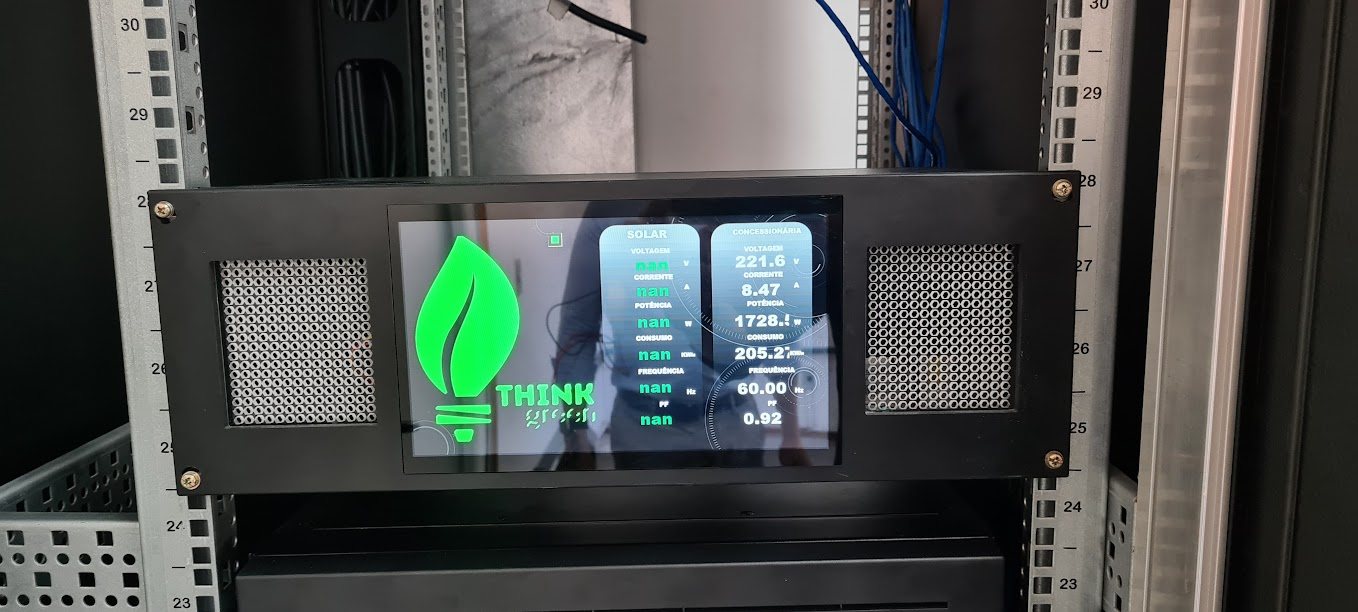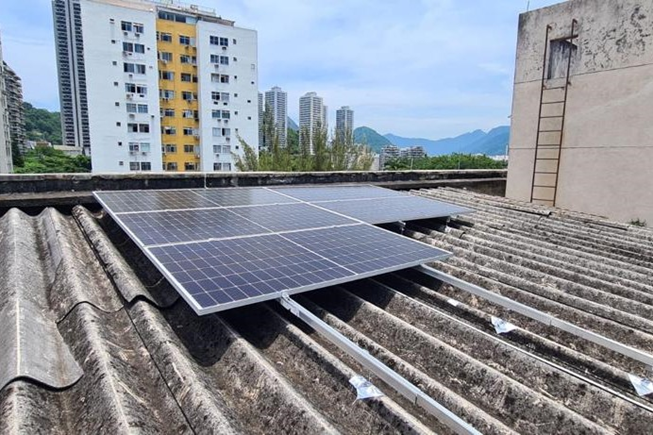Green Artificial Intelligence - Energy Efficiency for Sci.Mind Supercomputers
The Green Artificial Intelligence Project at LITCOMP-IA involves implementing a sustainable energy system using solar power in combination with UPS systems. This project aims to ensure continuous and efficient operation of AI supercomputers equipped with state-of-the-art GPUs, focusing on environmental sustainability and reducing energy costs. The CBPF is contributing to an energy transition by adopting solar power, using a cleaner and renewable energy source.
Objective:
The primary goal of the project is to implement an energy system that combines solar power and UPS systems to power AI supercomputers. The initiative seeks to maximize energy efficiency, ensuring the continuous operation of the equipment even during power supply interruptions.
The energy demand of AI supercomputers is significant, especially due to the intensive use of multiple GPUs for complex and extensive processing tasks such as machine learning and scientific simulations. The project proposes a sustainable solution, using solar power to reduce dependency on conventional energy sources and minimize environmental impacts.

Photo: Electronic device developed for the Green Artificial Intelligence Project, essential for monitoring and managing the energy efficiency of LITCOMP-IA. It displays real-time measurements of voltage, power, frequency, and energy consumption from the solar panels and the utility grid, allowing precise and optimized control of the energy resources used by the supercomputers.

Photo: Solar Panels for the Think Green Project - Solar Energy for Artificial Intelligence.
System Requirements:
The system requires machines with advanced GPUs, capable of operating under a high-energy demand regime. The infrastructure includes a set of 5kW UPS systems to ensure continuous power during energy fluctuations and photovoltaic panels providing an average of 13.75kWh/day, ensuring a reliable and renewable energy source.
Impact on Artificial Intelligence Research:
Implementing clean energy sources to power supercomputers represents a commitment to sustainability and efficiency, promoting a research environment that adheres to global environmental standards. This not only enhances the institutional image but also fosters innovations that can transform scientific research.
Conclusion:
The realization of this project allows for the implementation of a robust and efficient energy management system, based on an infrastructure that integrates high-efficiency photovoltaic modules and a UPS system synchronized with an internally developed charge controller by LITCOMP-IA. This controller, the central piece of the system, ensures an automatic transition between solar power and utility-supplied energy, guaranteeing stable and continuous power for high-performance GPU-equipped machines. Additionally, a real-time monitoring system allows constant supervision of the system's performance, facilitating quick interventions and necessary adjustments to maintain operational efficiency.
For the Artificial Intelligence Laboratory and CBPF as a whole, this project not only signifies a significant step towards sustainability and environmental responsibility but also represents a strategy to strengthen its infrastructure.
Optimizing energy consumption and reducing reliance on the conventional power grid translate into more economical and resilient operations, protecting the valuable resources and research developed in the laboratory against unexpected power interruptions. Furthermore, positioning CBPF as a pioneer in implementing sustainable energy solutions opens new horizons for collaborations and strategic partnerships, while reinforcing the institution's commitment to innovation and excellence in research.